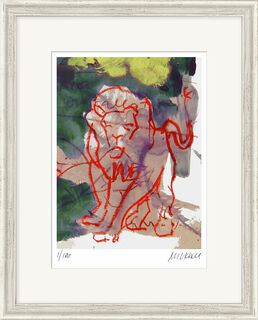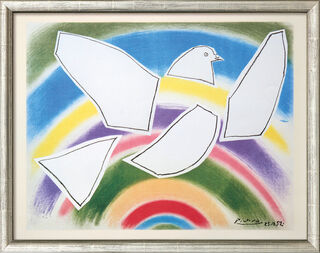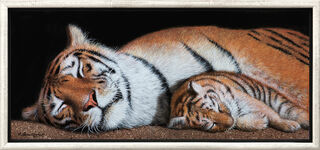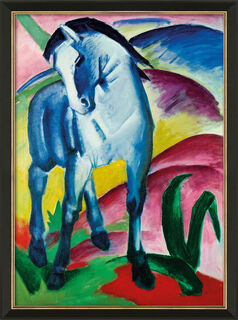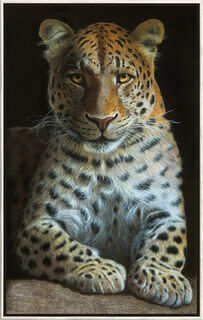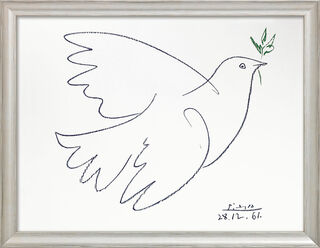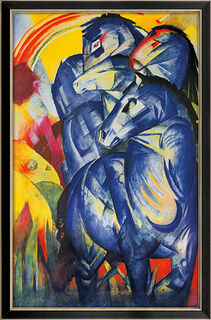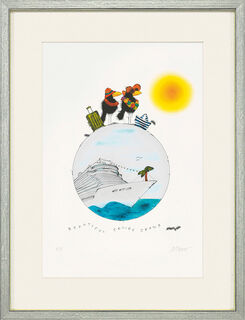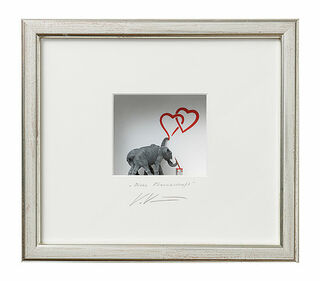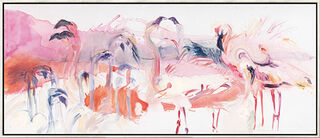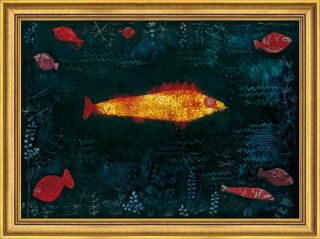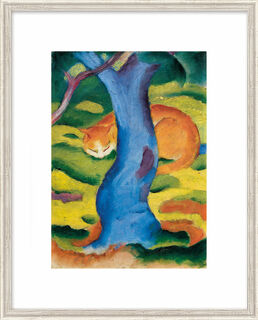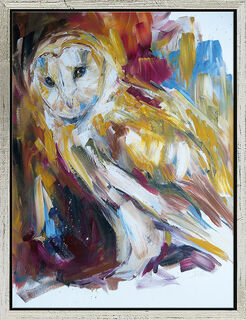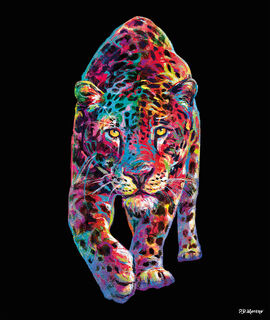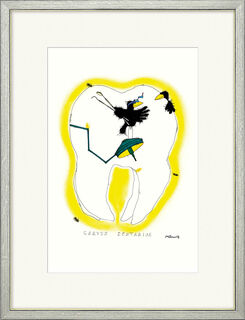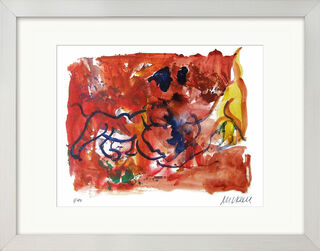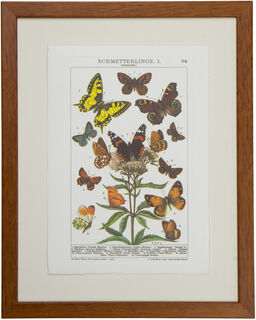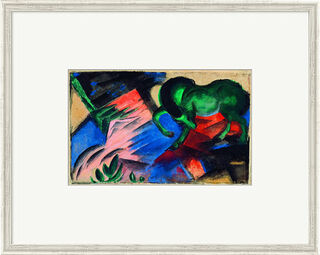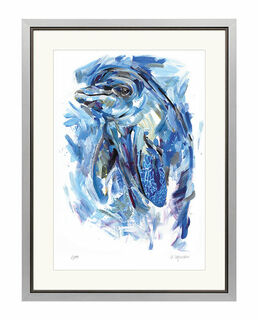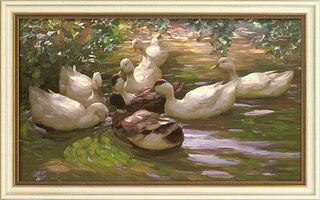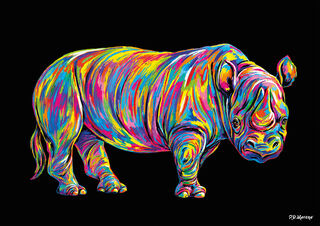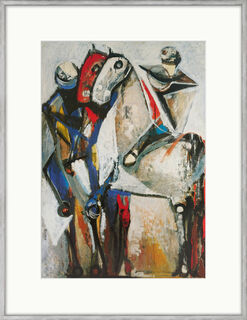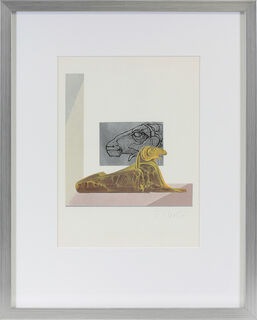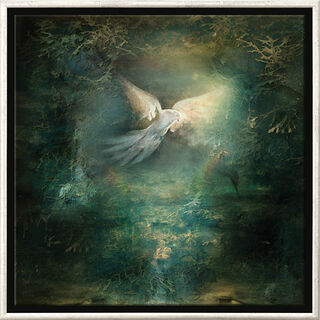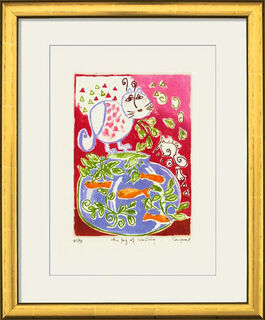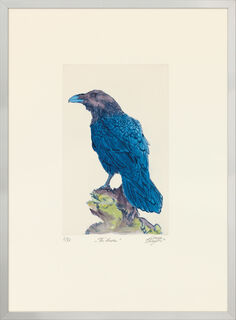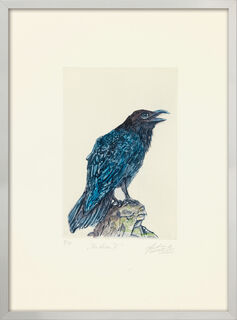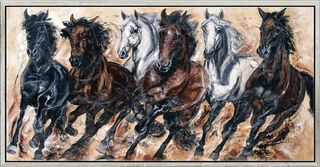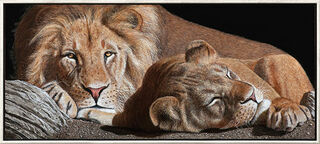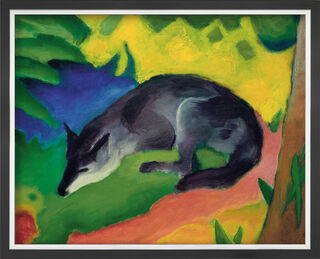Animal Depictions
Animals – Popular Motifs of Painting From the Stone Age to the Present Day
Albrecht Dürer's "Field Hare", Franz Marc's "Blue Horse" or Pablo Picasso's "Dove of Peace" – throughout art history, animals have been one of the most traditional pictorial subjects, holding a special place in every epoch. Farm animals, domestic animals or wild animals have always played an important role in the history of humanity, and accordingly, they have frequently been captured in paintings and drawings. The earliest known depictions of animals are currently considered to be cave paintings from Sulawesi in Indonesia, showcasing warty pigs and estimated to be over 45,000 years old. Over the centuries, various forms of depicting animals have developed in the visual arts. They recede into the background in pictures in which human activity is in the foreground, such as equestrian or hunting scenes, and serve merely as staffage. The same applies to many landscape paintings, in which the animals appear only as part of a larger natural scene. However, from the 16th century onwards, animals gained recognition as independent subjects in painting and were depicted without other accompanying elements.
Animal Images in Science and Religion
In addition to depictions of animals in art, images of animals can be found in numerous other contexts. In many religions, for example, animals and thus their representation in pictures or sculptures play an important role. For instance, ancient Egyptians considered cats sacred, as they were seen as incarnations of the goddess Bastet. A pictorial representation of a cat, therefore, always meant paying homage to the deity. But animals are also of great importance in Christianity. Many biblical stories feature various animals such as fish, the dove, and the lamb, which were also depicted in religious paintings. In addition, animal painting played an important role in science for a long time, especially in the field of biology. Before the invention of photography, painted animal pictures helped to document and classify the animal world. It was not unusual for artists to take on this task, sometimes undertaking long journeys to observe and depict the animals. Such animal pictures were not only reproduced in the scientific literature but they were also published in magazines and illustrated journals, for example, to introduce readers to the exotic animal world of foreign countries.
Animals Symbolise Human Qualities
Animals can represent more than just themselves, they can also serve as symbols. Their symbolic meanings are often taken up in animal paintings. Mostly, these are positive or negative human qualities or general values. For example, a bull symbolises strength, a fox cleverness, or a snake deviousness. A swan symbolises beauty and melancholy, a dog is a faithful companion, and a picture of a horse can express freedom and vitality. Therefore, an animal picture not only offers a visual treat but can also express a subtle message. Discover and buy beautiful animal pictures in our online shop.

